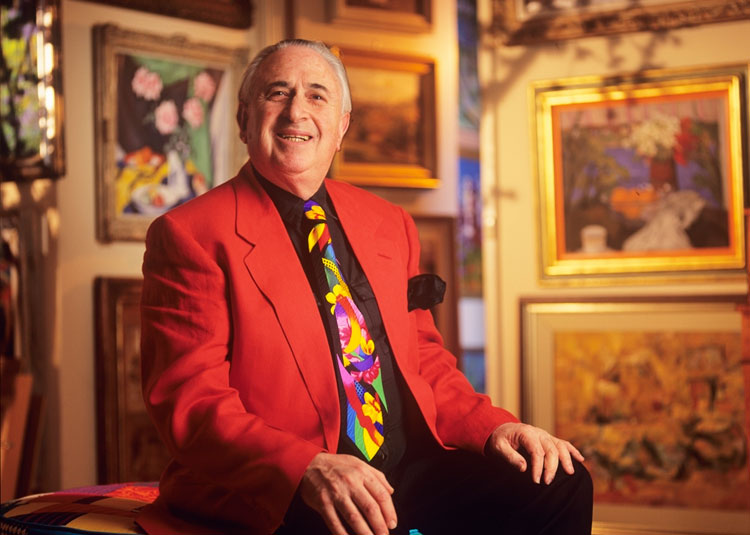Schenberg Art Fellowship
During his lifetime, Dr Harold Schenberg was a great supporter of emerging artists.
His support for promising talent continues through the awarding of an annual arts prize in his name.
His donation to The University of Western Australia included the establishment of a $35,000 Schenberg Art Fellowship to promote and assist up-and-coming artists.
The substantial prize money allows the winner to invest in the development of their practice.
The Schenberg Art Fellowship is awarded to an artist featured in the Hatched National Graduate Exhibition at the Perth Institute of Contemporary Arts (PICA).
Schenberg Art Fellowship 2023
Dr Harold Schenberg Art Fellowship, now in its 14th year, is the largest prize for an emerging artist in Australia. These significant awards for emerging artists are made possible by funds bequeathed to The University of Western Australia by Dr Harold Schenberg.
The Schenberg Art Fellowship of $35,000, the largest prize for an emerging artist in Australia, has been awarded to Paean Sarkar (QLD) of Queensland University of Technology for her thought-provoking works, এই শিল্পকর্মটি কি incomplete? and Artwork by an artist.
Schenberg Art High Commendation of $10,000 has been awarded to Jingxuan Chen (VIC) of University of Melbourne for their work Transformation vol. 2: a romantic incident
Schenberg Art Commendation of $5,000 has been awarded to Agatha Okon (WA), University of Western Australia for their work Outside of truth and Self-portrait with fruit.
The year’s Hatched: National Graduate Show was judged by a panel of industry leaders consisting of Justine Ambrosio, Acting Associate Director, Lawrence Wilson Art Gallery, Perth; Hannah Mathews, Director/CEO, Perth Institute of Contemporary Arts, Perth; and Ramesh Mario Nithiyendran, artist, Sydney.
The judging panel says: “Paean’s work grapples with the foundations of the Western art canon and its place within art pedagogy in a profoundly layered way.
“Conceptual art has the potential to alienate audiences. Paean has played with this through a multi-lingual approach, incorporating her native Bengali language. She offers us, the audience, a fresh perspective of what it means to make, disseminate and experience art from a second-generation migrant perspective. Paean’s work is declarative, it comes from the margins to claim and create more space for others in the canon.”
The artwork:
Investigating the institutional, cultural and ideological frameworks that shape the art world, Dr Harold Schenberg Art Fellowshiprecipient Paean Sarkar’s work recontextualises the language and methodologies of 1960s Conceptual art to navigate her experience as a second-generation Indian immigrant in Australia. Sarkar uses audience participation as a medium through which to explore power and autonomy within contemporary art institutions of the western world.
এইশিল্পকর্মটিকি incomplete? presents the phrase ‘was the artwork complete until you read this text?’ in the artist’s mother tongue, Bengali. The text is depicted quietly but assertively in white vinyl against the white walls of the gallery, critiquing the canon of white male Conceptual artists, yet denying access to most viewers.
In Artwork by an artist, visitors are invited to complete the phrase ‘This is an artwork by a ___________ artist’ using the labels provided that list a number of cultural identifiers.
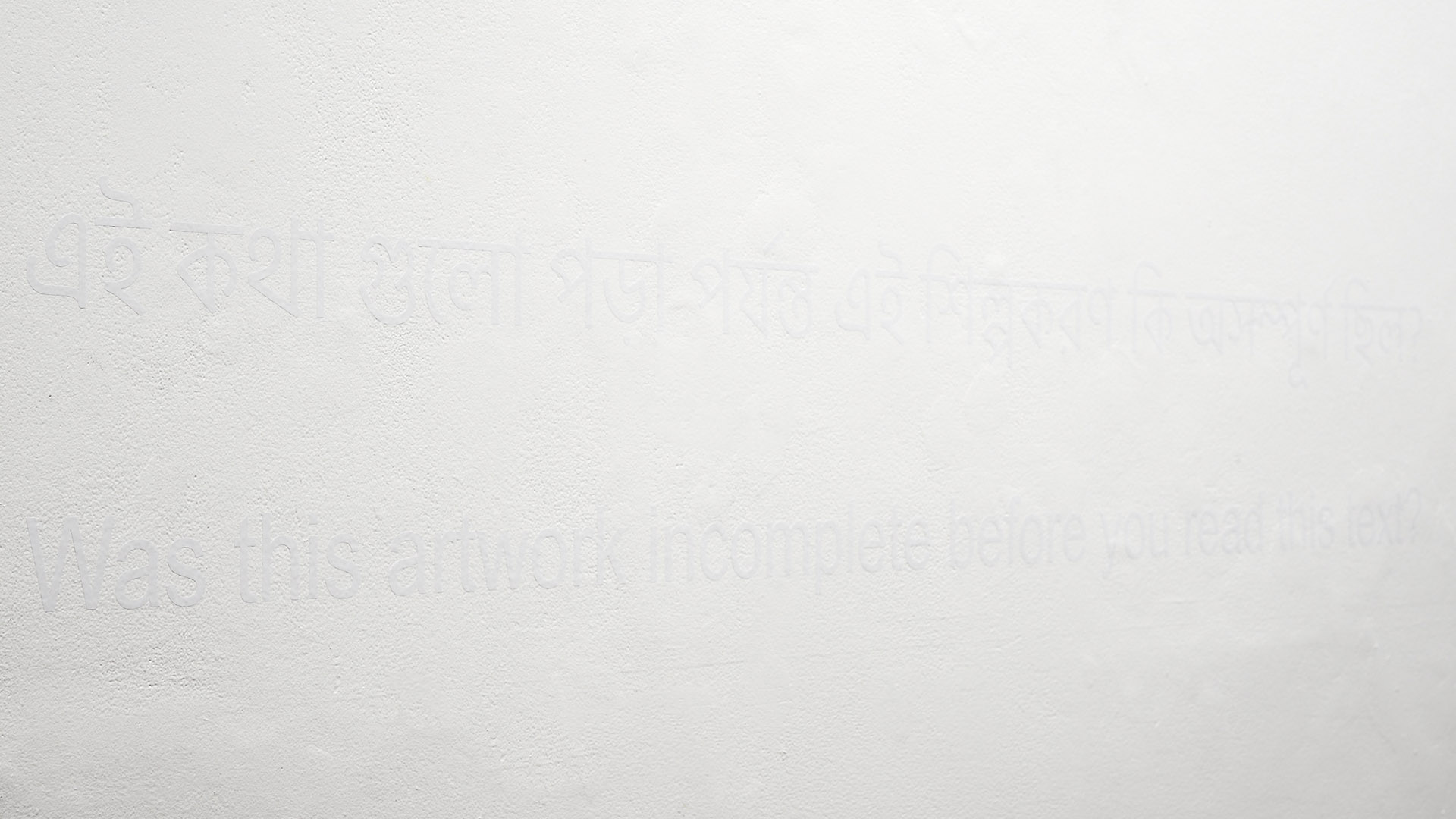
Schenberg Fellows
- 2022 - Erin Hallyburton, Remy Faint and Ilona McGuire
-
For the first time, the Fellowship, presented in partnership with the University of Western Australia to outstanding Hatched artists, has been split into three awards, allowing more of Australia’s talented, emerging artists the opportunity to advance their practices through this vital financial support.
The Schenberg Art Fellowship of $35,000, the largest prize for an emerging artist in Australia, has been awarded to Erin Hallyburton, a graduate of Monash University.
Schenberg Art High Commendation of $10,000 has been awarded to Remy Faint, a graduate of the University of New South Wales.
Schenberg Art Commendation of $5,000 has been awarded to Ilona McGuire, a graduate of Curtin University.
This year’s judges were Amy Barrett-Lennard, Director, PICA; Justine Ambrosio, Manager, Engagement and Education, Lawrence Wilson Art Gallery; and Michael Bianco, Director, Bunbury Regional Art Gallery.
The judges felt that Hallyburton’s work was an extremely sophisticated engagement with materiality, process and form: “Her use of waste oils and fats elicit a visceral response from viewers, in a refined and intriguing exploration of identity, class and the immigrant experience. Erin’s exquisitely paired back installation tests our perceptions of fatness through the mutability of her materials and their relation to our own bodies.”
About the artist
Erin Hallyburton is an artist and researcher who lives and works in Naarm Melbourne. Her sculptural practice engages with fat studies and intersectional theory in order to examine the conceptual and material limits of the body, and how these limits manifest in certain sites. Edible and transforming materials enact ongoing processes with the gallery space, highlighting the viscosity of architectural and hierarchal structures that are presented as neutral and static.
About the artworks
Erin Hallyburton’s installations confront conventional expectations of the body and how it is shaped within built environments. Through her work, Hallyburton challenges anti-fat ideologies by highlighting the architectural structures of everyday spaces that are considered neutral and static. Using heat to transform the fat from solid to liquid, she demonstrates the unpredictable nature of fat as a material. Her work asks the viewer to reconsider their understanding of how the human body can relate to the space around it and their implicit perceptions of fat and fatness.
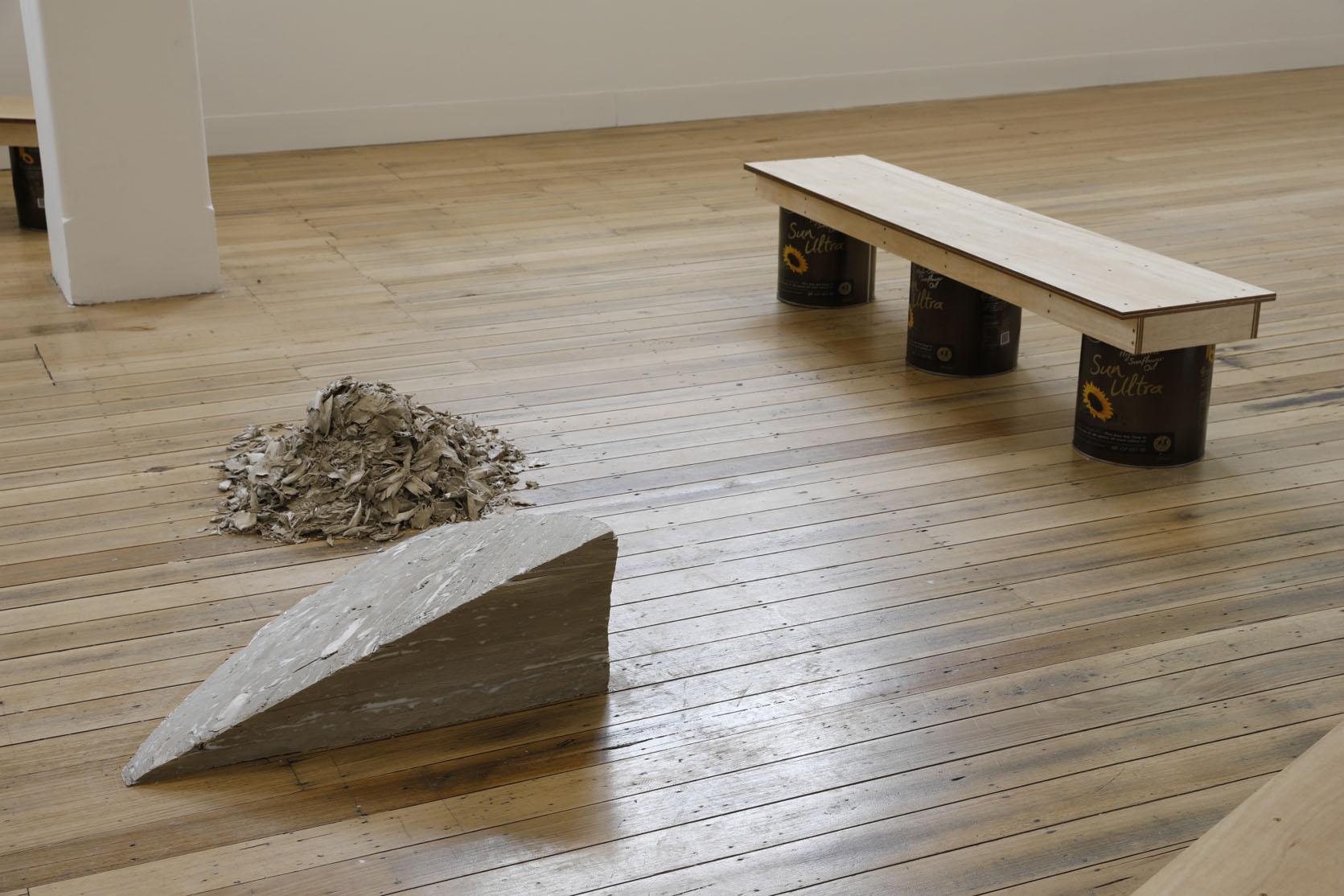
Image: Art installation by Erin Hallyburton, Greasy Paper Torn Open With Eager Hands, Salt Licked Fingers Sucked, 2021. Photo Andrew Curtis
- 2021 - Yul Scarf
-
The Schenberg Art Fellowship for 2021 was awarded to Yul Scarf.
The judges of this year’s Fellowship were Amy Barrett-Lennard, PICA, Sally Quin, Curator, UWA Art Collection, and Patrice Sharkey, Artistic Director ACE Open.
“Yul’s multi-dimensional work draws clever links between history, contemporary culture and activism in a way that encourages us to question the past and re-imagine our future. Through an expanded use of ceramics, installation and QR codes, the artist takes us on a compelling journey through time and space. The roles of clay and commemoration in Australian colonialism are explored and offered as powerful metaphors, all with gentle humour, intelligence and a sense of solidarity.” they said.
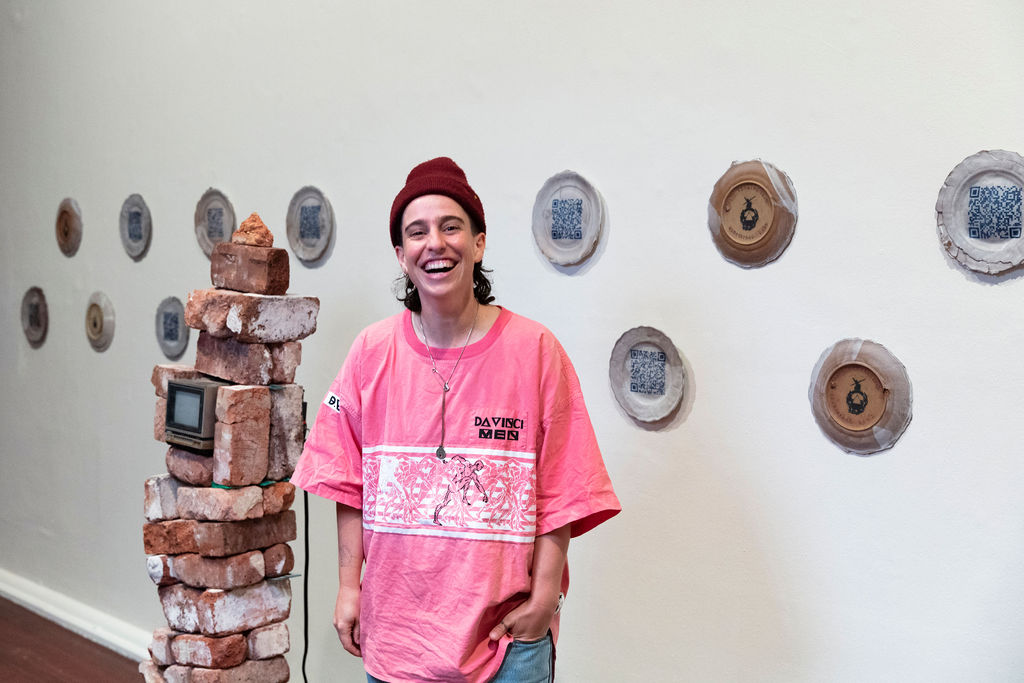
Image: Yul Scarf
2021 Schenberg Art Fellowship winner
Name Yul Scarf About the artist
Yul Scarf is a multi-disciplinary artist motivated by radical political change. Scarf uses their practice to materialise queer politics and humour, most recently working with Gweagal Bidjigal elders to mark the 250th anniversary of First Nations resistance to the ongoing colonial practices, or the ‘COLONIAL VIRUS’, on this continent. This collaborative process is key in developing their themes, imagery and politics. Through their ceramics practice, Scarf interrogates the role of clay in processes of colonisation, creating objects that compel audiences to re-envision the structures we inherit and the futures that are possible in the ruins.
About the artwork
Scarf’s ceramics invoke the long arc of time where unceded earth, remnants of the early colony and contemporary culture blur. In the space between the precarity and fixedness of ceramics, deeper truths about settler colonial Australia materialise. Referencing the Morrison government’s 2020 economic stimulus program, HomeBuilder Scheme (rebuild or renovate) declares its own instability. On top of a bed of 11-million-year-old Sydney sandstone sits a hastily constructed tower of bricks that were made by convicts in the 19th century. 2020 (Still Digesting) uses the medium of QR codes embedded in the glaze to link viewers to significant contemporary artworks and articles dealing with Australia’s colonial present. The back of each plate echoes the property mark of milk and beer bottles to state, ‘This Remains 100% Aboriginal Land’, speaking both to the clay of the plate and to the continent itself.
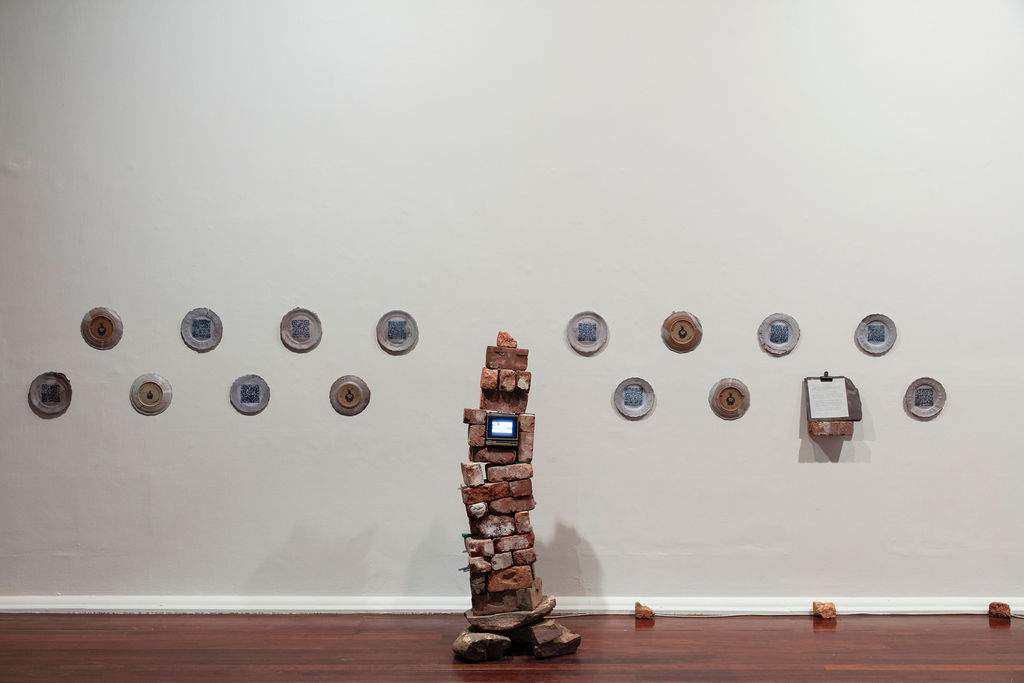
Image: Yul Scarf, HomeBuilder Scheme (new build or renovate), 2020, Sydney sandstone, convict bricks, television monitor. Photo: Bo Wong.
- 2020 - Tina Stefanou
-
Tina Stefanou from Victorian College of the Arts, Melbourne University, was awarded the Dr Harold Schenberg Art Prize in 2020.
The 2020 Schenberg Art Fellowship was judged by Amy Barrett-Lennard, Director, PICA, Ted Snell, Director, Lawrence Wilson Art Gallery, and Chad Creighton, CEO, Aboriginal Art Centre Hub WA.
"The paired video works were incredibly absorbing, drawing the viewer into their spell, encouraging us all to reflect on the artist’s family history, which foregrounds universal themes of ageing, empathy and recognition. It is an accomplished work that welds together music and the visual arts in a seamless amalgam," the judges said.
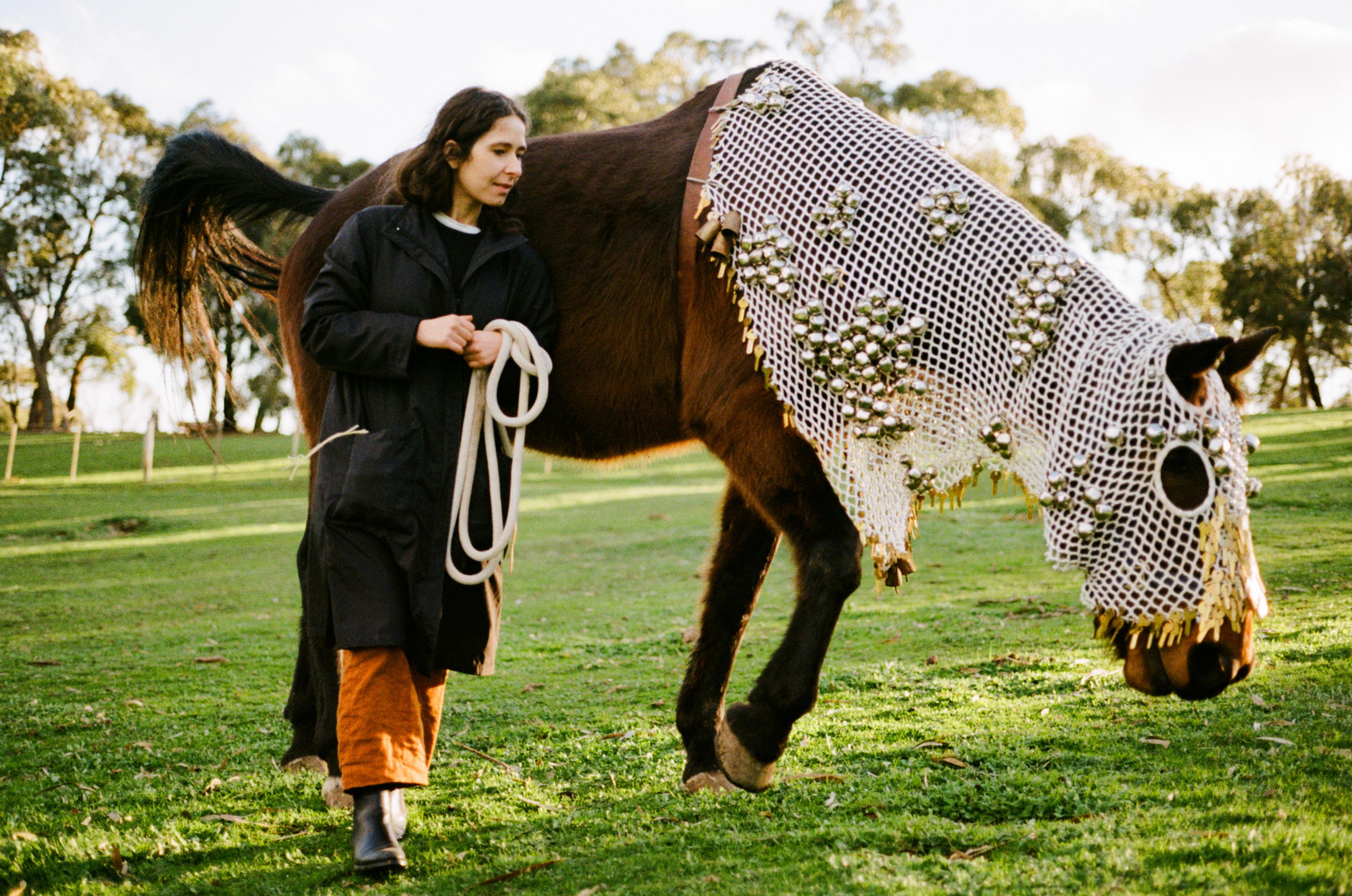
Image: Tina Stefanou. Photograph: Andrew Kaineder.
2020 Schenberg Art Fellowship winner
Name Tina Stefanou Australian University Victorian College of the Arts, University of Melbourne About the artist
Tina Stefanou is an Australian-Greek artist from Melbourne. She works across performance, installation, painting, sculpture, video, and music. As a vocalist, Stefanou explores how voice can exist within objects, spaces, ideas, and situations. Influenced by her immediate environment, she involves family members, non-singers, children, musicians, peers, animals, and objects as subject and medium, creating deeply layered social and poetic spaces through collaboration. Stefanou is interested in multispecies interactions and expanded notions of both composition and care. By interrupting a space to offer an idea beyond what is expected or anticipated, she invites the audience to examine their own relationships to the materials around them. Creating a field of tension between the visuals of the work and the voice as a multifaceted instrument, she allows the materials and composition to co-author the work.
About the artworks
Horse Power displays three elderly retired horses adorned in bells and keys. Each movement gives rise to sound as they ’shimmer’ across the Victorian bush, transforming into resonating gentle instruments. The horses’ adornments are constructed from hand-sewn fishing nets, referencing Stefanou’s grandmother’s forty years of employment in a textile factory. The work navigates labours of love, ageing, and purposelessness in a time of social and environmental precarity. Antiphonea features three naked double bassists twirling in a pool of window light as they attempt to play a line from a medieval vocal chant by German nun and composer Hildegard of Bingen. Referencing historical medieval choral music as well as the ongoing battle for recognition by female composers, the men’s bodies struggle to play the piece without colliding with one another. The two works together speak to poetic resonances and gentle collisions across time, species, and place to create an interconnected network of historical and contemporary experiences.

Image:Tina Stefanou, Antifonea (still), 2019, and Horse Power (still), 2019, installation view. Hatched: National Graduate Show 2020, Perth Institute of Contemporary Arts (PICA). Photograph: Bo Wong.
- 2019 - Anita Cummins
-
Anita Cummins from Monash University was awarded the Dr Harold Schenberg Art Prize in 2019.
The 2019 Schenberg Art Fellowship was judged by Perth Institute of Contemporary Arts (PICA) Director Amy Barrett-Lennard, Ted Snell, Chief Cultural Officer of UWA Cultural Precinct, and curator and writer Alison Kubler.
"The artist’s clean minimalist approach is married with a visually enticing, olfactory and emotionally charged experience. The work triggers feelings of nostalgia and hunger in equal measure while revealing the artist’s marvellous ability to transform the status of a mundane junk food snack to that of an elevated art material, reminiscent of pigment," said the judges.
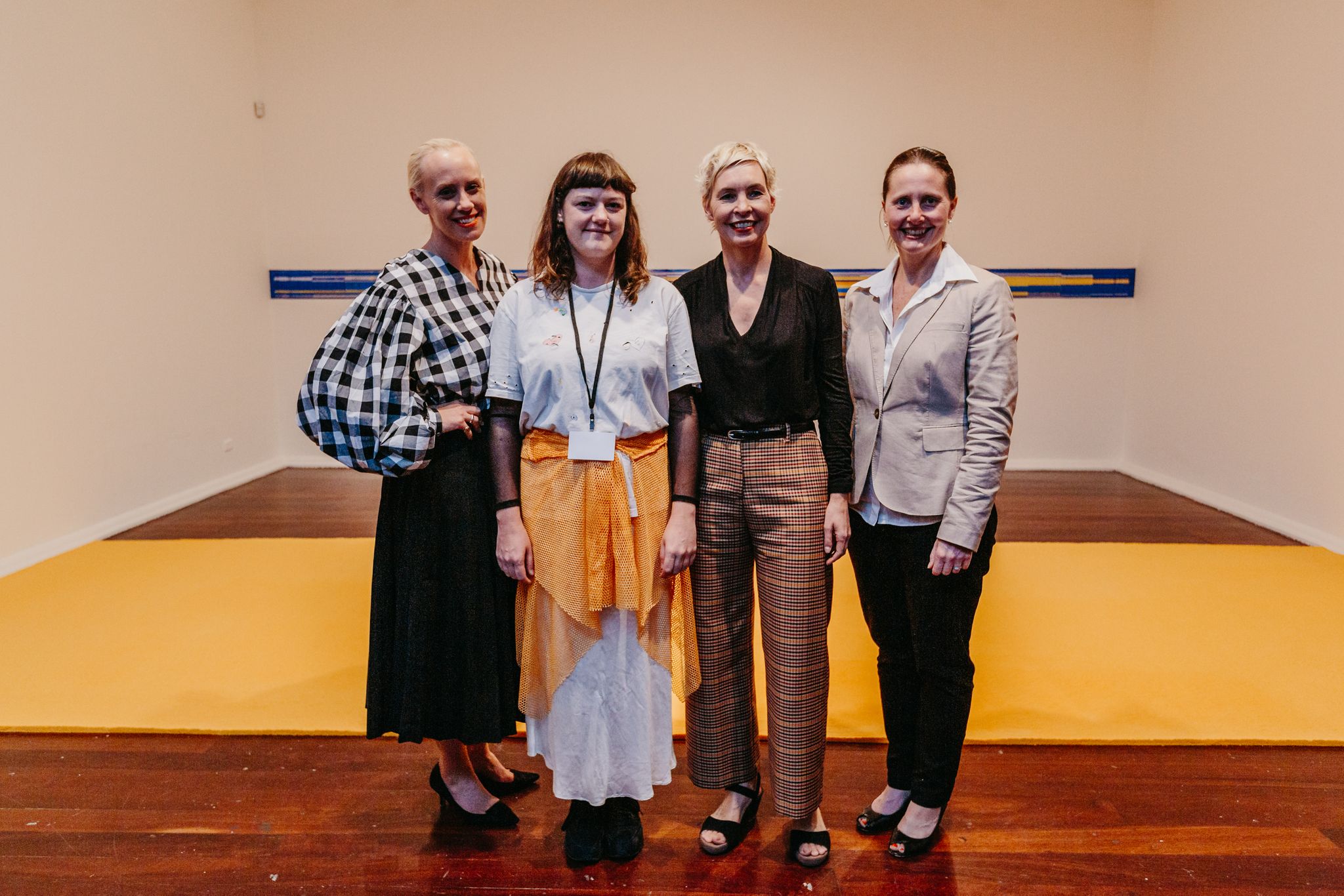
Image: (L-R) Alison Kubler, Anita Cummins, Amy Barrett-Lennard, Brenda McGivern. Photograph by OK Media.
2019 Schenberg Art Fellowship winner
Name Anita Cummins Australian University Monash University About the artist
Anita Cummins is an interdisciplinary visual artist based in Narrm (Melbourne). Anita recently completed her BFA (Honours) and is currently completing an MFA at Monash University. Using repetitive methodologies as a tool for living with mental illness, she explores personal experiences of pleasure and suffering, locating the studio as a site for coping, healing and recovery and the processing and exploration of complex emotional states. Previous exhibitions include feelings, Monash University, 2018, Airbnb guest, Sideshow, 2016, Living Lab of Beauty, Long Division, 2015 and Quick Copy, Bus Projects, 2013. In 2018 she received the Les Kossatz Memorial Award for her graduate exhibition feelings, which is currently on show at Perth Institute of Contemporary Art as part of Hatched: The National Graduate Show 2019.
feelings
feelings is a site-specific installation that embodies the psychological and physical processes of concealing, containing and releasing emotion. After mindlessly devouring entire boxes of Cheezels following intensive therapy sessions, Anita contacted Snack Brands Australia, the manufacturer of Cheezels, to ask for a sponsorship deal to produce the work. feelings embodies the attempt to restore one’s intolerable emotional state to that of happiness or pleasure through the proxy of short-term gratification. Like the layer of Cheezels carpeting the floor of the gallery and wafting their scent through the space, emotions can also be difficult to contain, leaking out of the body through tear ducts, facial expressions and body language.
I got out of bed today, the companion work to feelings, was made by methodically measuring and hand-cutting cheezel boxes into thin strips, the pieces of which were then rearranged to form an anamorphic image. The audience is denied access to the ideal viewing position for this work, which is blocked by a 3-metre wide layer of dense yellow-orange dust. Viewing is restricted to a vantage point that completely obscures the image from its original form.
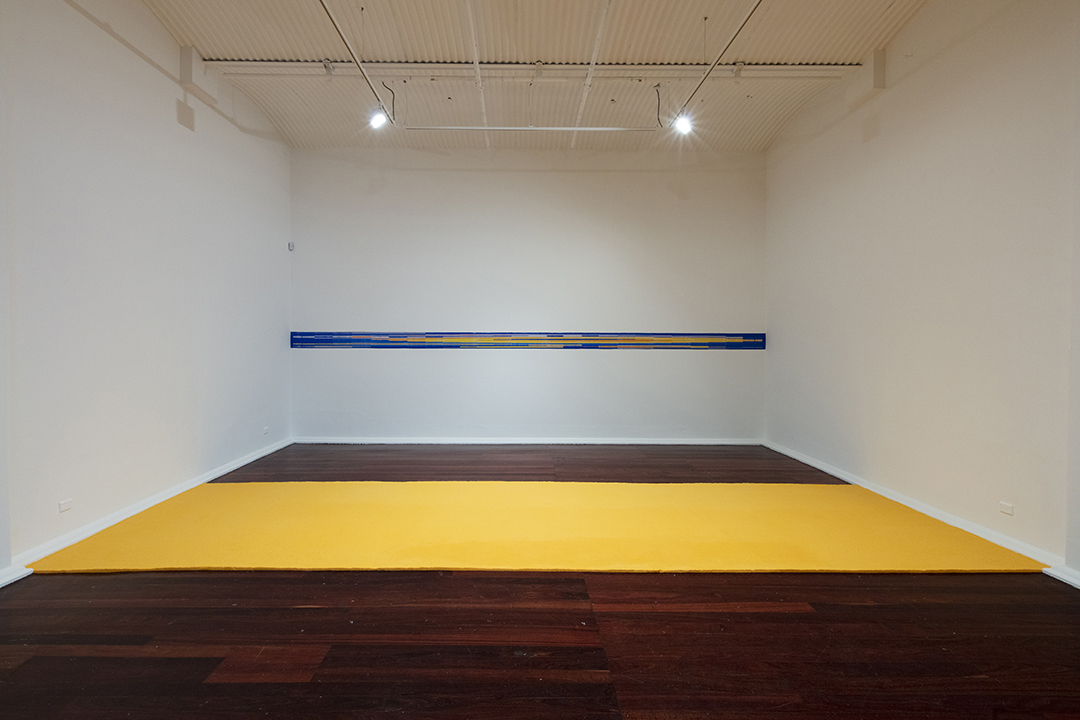
Image: Anita Cummins, feelings, 2019, crushed Cheezels, and I got out of bed today, 2019, cardboard boxes, glue. Hatched: The National Graduate Show 2019, Perth Institute of Contemporary Arts. Photograph: Bo Wong
- 2018 - Elham Eshraghian
-
Elham Eshraghian was awarded the Dr Harold Schenberg Art Prize in 2018.
This year the Schenberg Art Fellowship was judged by director of the Perth Institute of Contemporary Arts (PICA) Amy Barrett-Lennard, Ted Snell, Chief Cultural Officer of UWA Cultural Precinct, and executive editor of Artlink magazine Eve Sullivan.
“Drawing from her Iranian Baha’i heritage, Elham successfully combined personal narrative with a broader perspective of world history and politics,” the judges said.
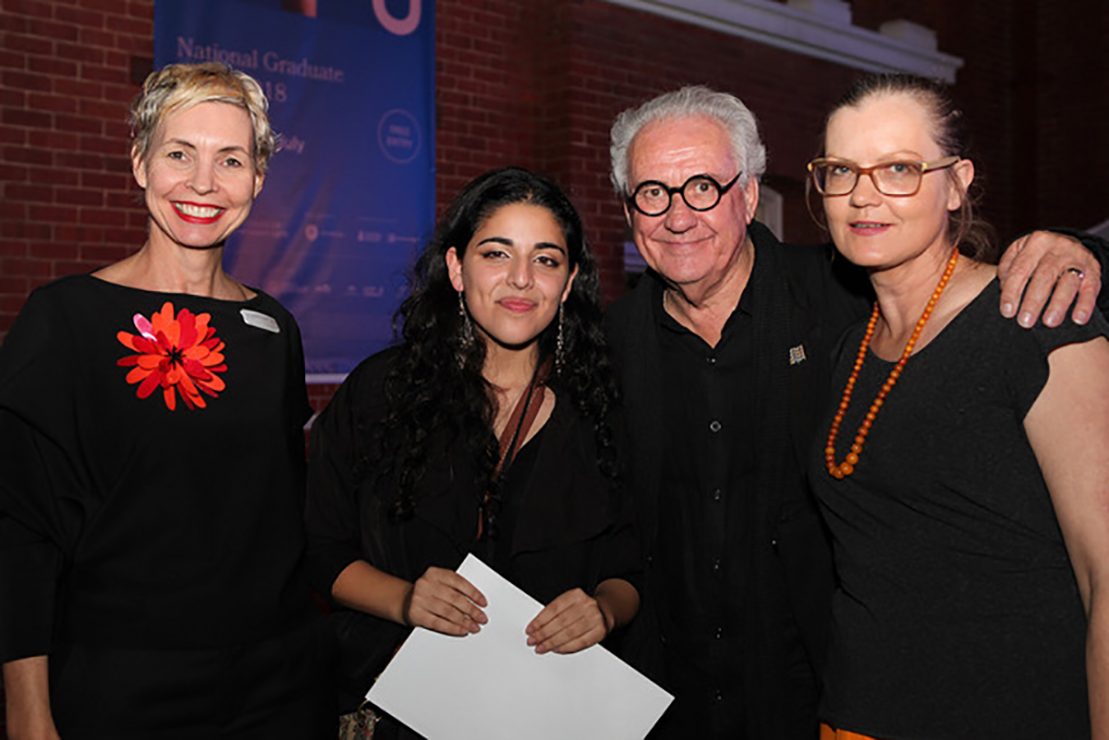
Image: (L-R) Amy Barrett-Lennard, Elham Eshraghian, Ted Snell and Eve Sullivan. Photo by Giovanni Costi.
2018 Schenberg Art Fellowship winner
Name Elham Eshraghian Australian University The University of Western Australia About the artist
Elham Eshraghian is an Australian–Iranian Bahá’í Artist specialising in film and video installations. Exploring the concept of cultural identity and loss, her aim is to create an affective poetic space. By combining the historical narrative with evocative symbolism, she addresses the Iranian diaspora and the emotional impacts of displacement and conflict. Born and living in Perth, Eshraghian has completed a Bachelor of Fine Arts (First Class Honours) at the University of Western Australia in 2017 and was awarded the Jean Callander Art Award. She is currently undertaking a Masters in Fine Arts and is part of a 6 week Artist Residency at the Perth Institute of Contemporary Art in correlation with the 2018 Hatched Exhibition.
About the artwork
Bohrân is part documentary, part visual poetry that explores Eshraghians mothers’ persecution and escape from Iran as a result of the 1979 Revolution. Eshraghian explores the deeper discourse surrounding the Middle Eastern unrest and the tense and fragile relationship with the West. Her work particularly invites answers to questions, “How can we, through unity, create a complex and diverse whole?” In cinematic scale, the choreographed narrative and pixelated archival and found footage communicates the relationship between the embodied personal experience of her family and the collective historical memory of the Iranian diaspora - inviting an empathetic understanding of people engulfed in turbulence across the globe.
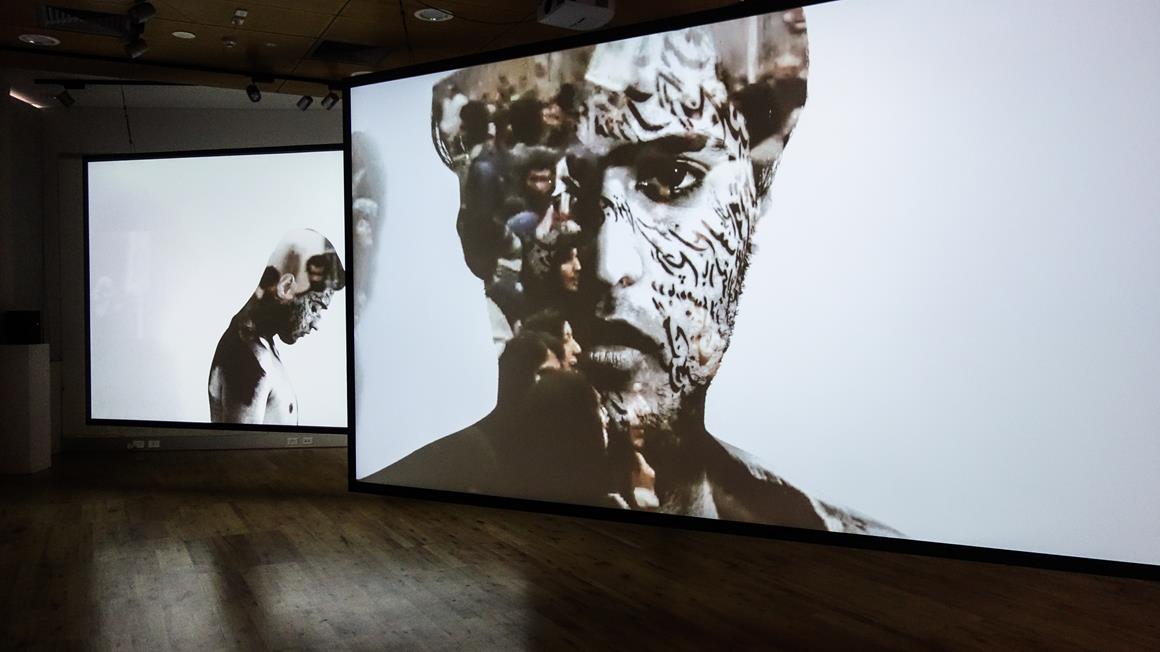
Image: Elham Eshraghian, Bohrân, 2017, two-channel video installation. Credit: (performer) Arman Zamani.
- 2017 - Kai Wasikowski
-
Kai Wasikowski was awarded the Dr Harold Schenberg Art Prize in 2017.
Kai Wasikowski is a multidisciplinary artist living and working in Sydney, Australia. Utilising photography, readymade materials and multimedia, Kai's practice considers what it means to be ecologically aware.
Kai completed a Bachelor of Visual Arts (First Class Honours with University Medal) at the Sydney College of the Arts in 2016 and was awarded the Deans Award for Honours and the 2016 Artereal Gallery Mentoring Award.
His work was recently shown in ‘Hatched: National Graduate Show’ at the Perth Institute of Contemporary Arts where he was awarded the 2017 Schenberg Art Fellowship. Kai is currently working towards a solo exhibition this November at Artereal Gallery, Sydney.
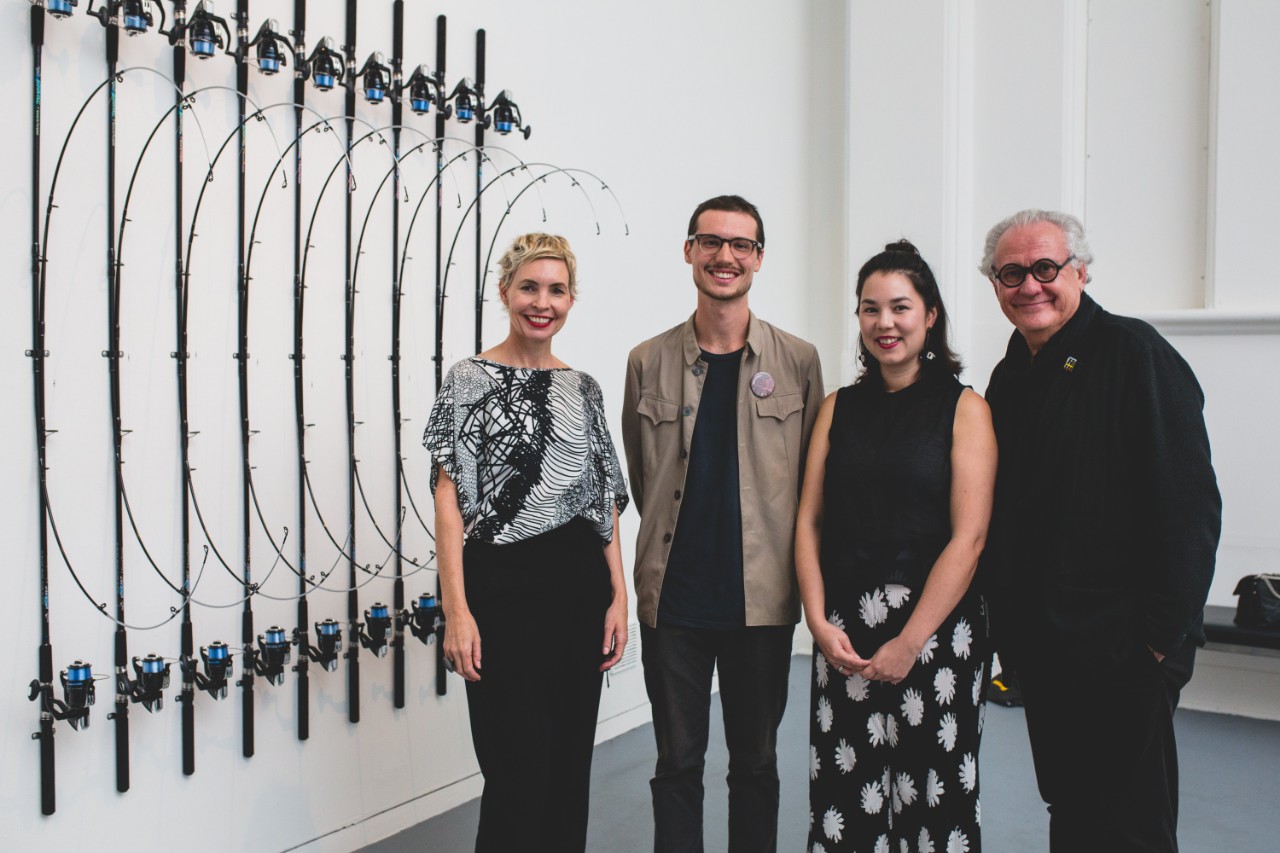
Image: Kai Wasikowski standing beside his work In-tension (2016) at PICA alongside the Schenberg Fellowship judges: (L-R) Amy Barrett-Lennard, Mikala Tai and Professor Ted Snell. Photo courtesy of OK Media Group.
2017 Schenberg Art Fellowship winner
Name Kai Wasikowski Australian University Sydney College of the Arts On being awarded the Schenberg Art Fellowship "Becoming a Schenberg Fellow provides an incredible opportunity to expand and deepen the scope of my artistic practice and research. I feel so thrilled by the possibilities of travel, the time to explore new environments and histories, and the ability to build and strengthen relationships within creative spaces both familiar and unfamiliar. The generous and momentous support of the Fellowship is a real privilege and a huge encouragement to push past my own expectations and capabilities as an artist and a member of the local and international art community." Artist statement
My practice considers what it means to be ecologically aware. Utilising photography, readymade materials and multimedia, my work draws together aesthetic signifiers of technology and nature to explore the increasing intimacy of these binary terms and the emotional environments their meshing creates.
In-tension
In-tension presents a linear pattern of fishing rods drawn inwards to each other by interlocked fishing line, strung in a state of constant tension. The repetition and restrained energy of the work contemplates a reluctance in the shift from modernism to postmodernism (from my conditioning as a child to my experience of the present), by reframing an object previously known for its use-value to an aesthetic device with innumerable meanings and connotations; hunting, industry, recreation, violence, globalisation, global warming, animal rights, biodiversity etc. In-tension thus strives to be both aesthetically pleasing in form and aggressively complex in meaning, exploring the tight and seemingly structured grip that modernity holds on contemporary life.
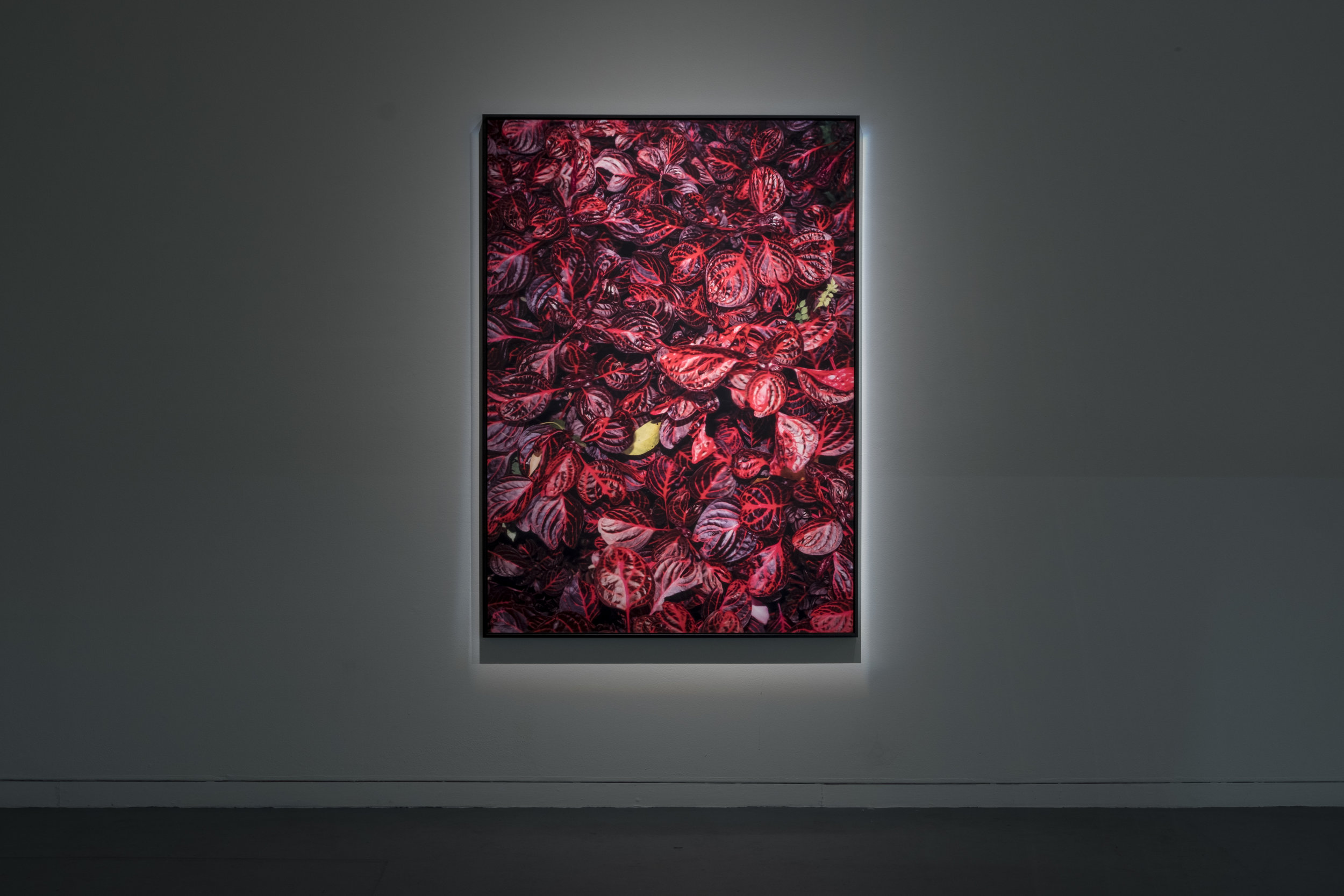
Image: Installation view of Looking with a forked tongue for HATCHED. Photo by Alessandro Bianchetti.
Looking with a forked tongue
Looking with a forked tongue is a lenticular photograph of garden foliage with a 3D optical effect of undulation. With saturated hues and the illusion of depth and movement, Looking with a forked tongue presents a simulation of a pristine and fertile world unperturbed by human touch. In doing so it explores personal feelings of isolation from ‘nature’ as an ideology of an organic and pristine place. It is nature doing its best impersonation of nature, somewhere in-between an organic past and a manufactured future.
- 2016 - Selena de Carvalho
-
Selena de Carvalho was awarded the Dr Harold Schenberg Art Prize in 2016.
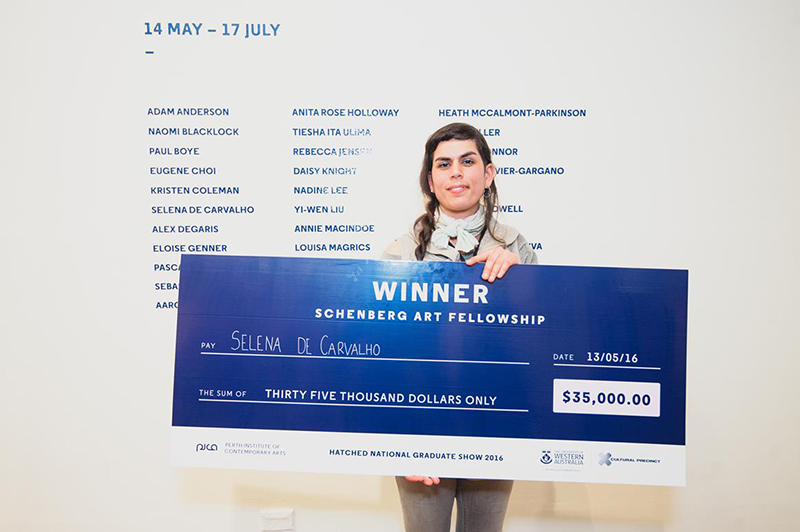
Image: Artist Selena de Carvalho pictured at PICA receiving the 2016 Schenberg Art Fellowship.
2016 Schenberg Art Fellowship winner
Name Selena de Carvalho Australian University Tasmanian College of the Arts, The University of Tasmania Winning work Using moss and clay buttons, Ecological Haunts (ii) provides a tangible experience for the audience. Touching these buttons activates the artwork, and produces an acoustic portrait of a 10,500-year-old tree. The sound produced by the piece is in fact the sonification of the internal sap (or xylem) that flows throughout the tree. It is the sound of the tree imbibing water. The Schenberg Art Fellowship award of $35,000 is presented to an emerging artist to support them in developing their career. Artist statement
"Ecological Haunts responds to a perceived lack of empathy and the cultural/social denial of grief regarding the legacy of ecologically destructive behaviours, with specific focus on the impact on non-human sentient entities, including animals and plants."
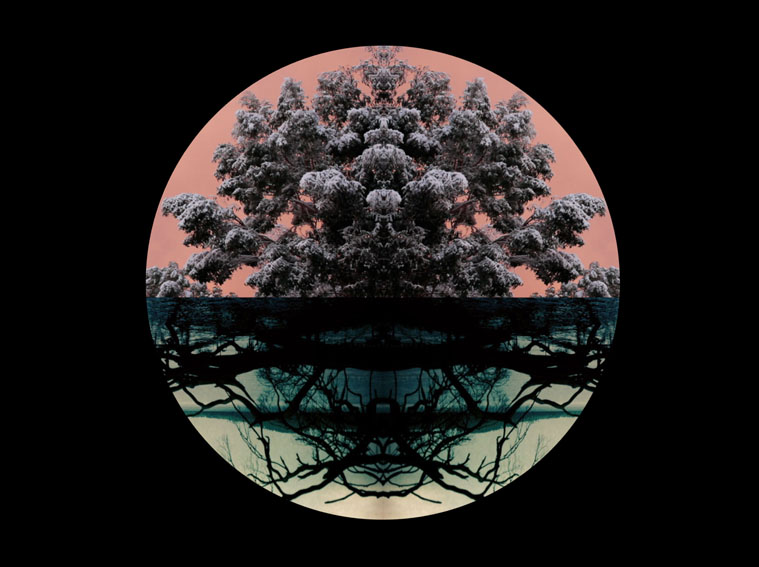
Image: Ecological Haunts (ii), From the series Ecological Haunts, 2015. Projection, 4-channel sound, tree stumps front the Arve Valley, glass blown dripper, perspex, moss/rock from Mt Reed, clay from Bruny Island. 375 x 490 x 430 cm. Selena de Carvalho, Photo by OK MEDIA.
"Receiving the Schenberg Art Prize is such a privilege, especially in the current climate for of Arts funding. This incredible support will extend and enable my practice in an accelerated manner that is so exciting. My plan is to keep exploring new ideas and making experimental work.
"My practice responds to notions of personal ecology and human interaction with the environment, often relating to the perceived consumption of wilderness and lived experiences of wildness, focusing on the core paradox of how we (humanity) yearn for the untamed, and yet in our desire to the experience the wild consciously or unconsciously seek to control it. This paradox operates as a framework for deeper inquiry within my cross disciplinary practice.
"This scholarship will provide the freedom to travel, research, take risks and invest time in connecting these ideas and ideologies with creative peers, in new environments with expanded audiences."
- 2015 - Andrew Styan
-
Andrew Styan was awarded the Dr Harold Schenberg Art Prize in 2015.

Image: Andrew is pictured with PICA Director Amy Barrett-Lennard and Mr Nick di Lorenzo, a Trustee of Dr Harold Schenberg's Estate.
2015 Dr Harold Schenberg Art Prize winner
Name Andrew Styan Australian University University of Newcastle, NSW Winning work The Bell Buoy is a kinetic multimedia installation exploring humanity’s impact on climate. A mechanically rotating piece of coal is filmed and projected live in the gallery space creating a surreal live film of a hyper-realistic asteroid looming ever closer. Artist statement
"I was surprised and elated to win the Schenberg Art Prize. It is an honour for my work to be selected from the beautifully conceived and executed works of my fellow hatchlings.
My ongoing practice centres on engaging the public in the challenge of climate change and the prize will go towards furthering my research in that area. To date I have worked in isolation from other climate change artists and scientists so I intend to use the prize and the recognition that it attracts to develop connections within these communities, primarily through attending conferences, festivals and workshops covering media arts, art/science interactions, and climate change with the goal of undertaking relevant residencies, collaborations or further study in 2016.
I have a special interest in attending ArtCOP21, the art festival and sustainability conference that coincides with the pivotal UN Climate Change Conference in Paris in December this year."

